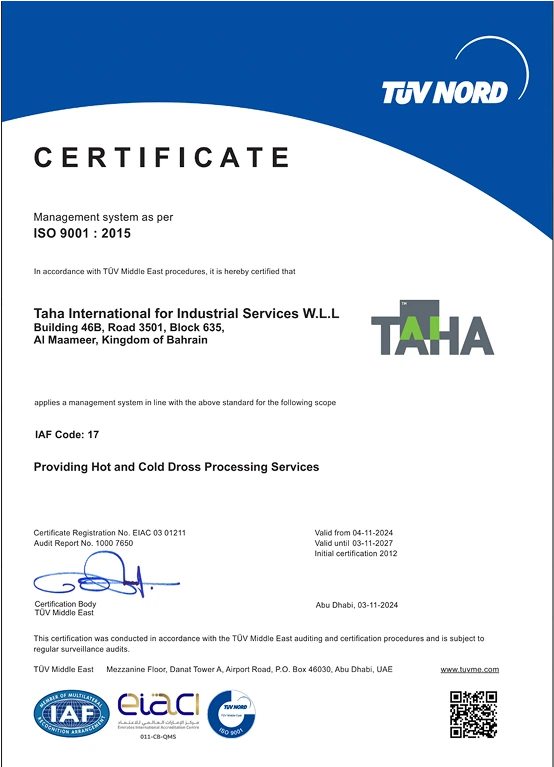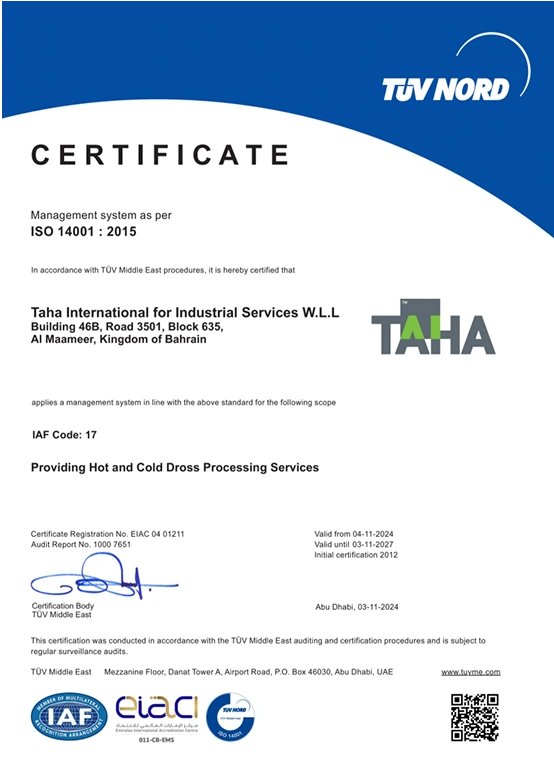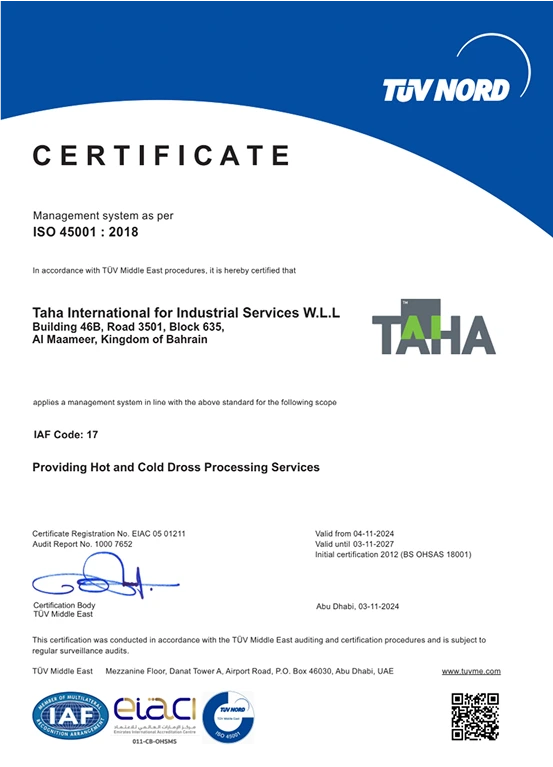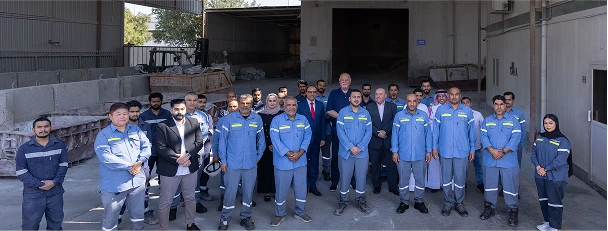ABOUT US
History
TAHA was established in 2003 with a vision to eliminate waste from the aluminium industry. Through its zero waste, ultra-low carbon dross processing technology, TAHA is making an important contribution towards making the aluminium industry more sustainable.
TAHA’s environmentally friendly aluminium dross processing solutions recover metal and refine the residuals, without using salt or any other chemicals, turning the residuals into feedstocks for a number of in house developed value-added applications.
2003

Establishment of TAHA
The founding year of TAHA marked the beginning of unwavering dedication to delivering superior metal recovery solutions.
2005

Entry into Downstream Aluminium Operations
TAHA embarked on a transformative journey, beginning dross processing for GARMCO, one of the MENA region's largest downstream aluminium operations. This milestone solidified TAHA's significant presence and influence in the industry.
2010

Expansion into metal recovery for Wire and Rod production facility
TAHA expanded its horizons by providing metal recovery services to Midal Cables, the leading company in supplying the world market with Rod casts and further production of wires, consolidating its position as a trusted partner in the global metal recovery landscape.
2011

Rio Tinto and TAHA Partner for Sustainable Aluminium Processing
Rio Tinto and TAHA International are working together to implement zero-waste solutions for aluminium dross, enhancing metal recovery and supporting sustainability in New Zealand.
2014

Services for Alba
TAHA extended its expertise to provide metal recovery services to the world’s largest smelter outside China, underscoring its global footprint and unwavering dedication to excellence in the industry.
2017

Technology Licensing Agreement
TAHA engaged in a Technology Licensing Agreement (TLA), through which its patented processing technology was licensed to Runaya Refining for utilization across Indian cast-houses, emphasizing its commitment to fostering technological advancements and collaborative growth.

Our Mission
To flourish as a dross processor that identifies, designs, develops and commercializes viable processes and products intended to improve environmental quality, increase metal return, and resolve serious industry legacy issues. To develop our processes and value-adding products in a considered, cost-efficient manner. To pursue commercialization or development partners when and where appropriate. To make a difference.
Our Vision
To be recognized as the new benchmark in dross processing. To be seen by our customers globally as highly competent, reliable and competitive problem solvers. To focus on sustainability in everything we do, understanding the impact of what we do on people and the planet, as well as profit. To keep health, safety and the environment as our focal point.

TAHA’s Values
Accountability
Taking responsibility for our actions and their impact on people, communities, and clients.
Business Partnerships
Collaborating with partners who share our values.
Collaboration
Fostering teamwork within and beyond TAHA to deliver and receive the best.
Community
Contributing to society by developing our people and those we work with.
Quality
Striving for excellence in all that we do.
Safety
Ensuring the safety of everyone we work with, aiming for zero incidents and accidents.
Service Excellence
Delivering outstanding service to achieve excellence.
Achievements
TAHA International for Industrial Services has obtained the ISO 19001:14001:45001 certification

ISO 19001
View certifiacte

ISO 14001
View certifiacte

ISO 45001
View certifiacte
Meet the Team
A passionate group of innovators driving sustainability, innovation, and excellence to shape a greener future for the aluminium industry.






Corporate
Governance Policies
Risk Management Policy
Our Risk Management Policy provides a structured approach to identifying, assessing, managing, and mitigating risks that may impact the organization’s ability to achieve its objectives. The policy ensures that risk management is an integral part of decision-making and business operations.
Shareholder Communication Policy
This policy outlines the principles and practices for transparent, consistent, and timely communication with shareholders to foster trust, ensure accountability, and enhance shareholder engagement. This policy reflects the company’s dedication to fostering strong, trust-based relationships with its shareholders.